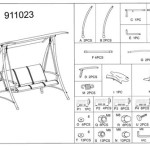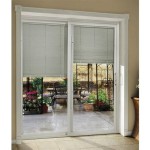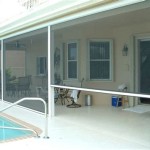```html
Fuentes Para Patios Y Jardines: Enhancing Outdoor Spaces With Water Features
Fuentes para patios y jardines, or water features for patios and gardens, represent a significant element in landscape design, offering aesthetic appeal, auditory tranquility, and ecological benefits. The integration of a fountain transcends mere decoration; it cultivates a serene atmosphere conducive to relaxation and contemplation. The selection and installation of a fountain require careful consideration of various factors, including available space, design preferences, maintenance requirements, and budgetary constraints. Understanding the diverse types of fountains available, their functionalities, and the necessary upkeep ensures a successful addition to any outdoor environment.
Types of Fountains for Patios and Gardens
The diversity of fountain designs ensures a suitable option for virtually any patio or garden size and style. Fountains can be broadly categorized based on their construction, size, and water circulation mechanism. The following represent some of the more popular types found in residential and commercial landscapes:
Tiered Fountains: These fountains feature multiple basins stacked atop one another, with water cascading from the uppermost tier down to the lower levels. Tiered fountains are often constructed from materials like cast stone, concrete, or resin, and their classic design lends a sense of elegance and grandeur to the surrounding space. Their visual impact makes them suitable as a focal point in larger gardens or courtyards.
Wall Fountains: Designed to be mounted against a wall or other vertical surface, wall fountains are ideal for smaller patios or balconies where space is limited. They are available in various styles, ranging from rustic and traditional designs to more contemporary and minimalist aesthetics. Water typically flows from a spout or decorative feature into a basin below, creating a visually appealing and space-saving water feature.
Pond Fountains: These fountains are designed to be placed within an existing pond or water garden. They often incorporate features like jets, sprays, or waterfalls, adding movement and aeration to the water. Pond fountains can help improve water quality by promoting oxygenation and preventing the growth of algae. Submersible pumps are typically used to circulate water from the pond to the fountain and back again.
Self-Contained Fountains: As the name implies, self-contained fountains operate independently of an external water source. They feature a reservoir that holds the water, which is then recirculated by a pump. These fountains are easy to install and maintain, making them a popular choice for both beginners and experienced gardeners. Self-contained fountains are available in a wide range of sizes, styles, and materials, catering to diverse design preferences.
Disappearing Fountains (Pondless Fountains): These fountains create the illusion of water disappearing into the ground. Water flows over a decorative feature, such as rocks or pebbles, and drains into an underground reservoir. The water is then pumped back up to the surface, creating a continuous cycle. Disappearing fountains are considered relatively low-maintenance and are safe for children and pets, as there is no standing water.
Factors to Consider When Selecting a Fountain
Choosing the right fountain requires careful consideration of several factors to ensure that the selected feature complements the existing landscape and meets the specific needs and preferences of the homeowner. The following considerations are crucial in the selection process:
Size and Space: The size of the fountain should be proportionate to the available space. A large fountain in a small patio can overwhelm the area, while a small fountain in a large garden may appear insignificant. Measure the available space and consider the dimensions of the fountain before making a purchase.
Style and Design: The style of the fountain should complement the overall design aesthetic of the patio or garden. Consider the architectural style of the house and the existing landscaping features. Choose a fountain that blends seamlessly with the surrounding environment, creating a cohesive and visually appealing space. Consider material choices and colour palettes to align with existing garden furniture and plantings.
Material and Durability: The material of the fountain should be durable and weather-resistant, capable of withstanding the elements. Common materials include cast stone, concrete, resin, metal, and ceramic. Each material has its own advantages and disadvantages in terms of durability, maintenance, and aesthetics. Choose a material that is appropriate for the climate and the level of maintenance that the homeowner is willing to provide. Consider the resistance to UV exposure and potential for cracking during freezing temperatures.
Water Source and Plumbing: Determine the source of water for the fountain. Some fountains require a direct water line connection, while others are self-contained and recirculate water from a reservoir. If a water line connection is required, ensure that there is a nearby water source and that the plumbing is properly installed. Consider the cost and complexity of installing a water line if one is not already available. Also, evaluate the capability to drain the fountain for cleaning or winterization.
Power Source and Electrical Requirements: Most fountains require electricity to power the pump. Ensure that there is a nearby electrical outlet and that the wiring is properly installed. Consider using a ground fault circuit interrupter (GFCI) outlet to protect against electrical shock. If an electrical outlet is not readily available, consider hiring an electrician to install one. Solar-powered fountains offer an alternative option, eliminating the need for electrical wiring, but their performance may be affected by weather conditions.
Maintenance Requirements: All fountains require some level of maintenance to keep them clean and functioning properly. Regularly clean the fountain to remove debris, algae, and mineral deposits. Check the pump and filter regularly and replace them as needed. Add water to the fountain as needed to maintain the proper water level. Consider the time and effort required to maintain the fountain before making a purchase. Algaecides may be necessary to prevent algal growth, especially in sunny locations.
Budget: Fountains vary widely in price, depending on their size, style, material, and features. Establish a budget before beginning the selection process and stick to it. Consider not only the initial cost of the fountain but also the ongoing costs of maintenance, electricity, and water.
Maintaining Fountains for Longevity and Optimal Performance
Regular maintenance is crucial for ensuring the longevity and optimal performance of a fountain. Neglecting maintenance can lead to algae growth, mineral buildup, pump failure, and other problems. Implementing a consistent maintenance schedule can prevent these issues and keep the fountain looking and functioning its best. The following maintenance practices are essential:
Cleaning: Regularly clean the fountain to remove debris, algae, and mineral deposits. Use a soft brush and mild detergent to scrub the fountain's surfaces. Rinse thoroughly with clean water. The frequency of cleaning will depend on the environment and the type of fountain. In general, fountains should be cleaned at least once a month, or more frequently if necessary. Hard water can lead to mineral deposits; consider using a water softener or regularly descaling the fountain.
Water Quality: Maintain good water quality to prevent algae growth and mineral buildup. Use a fountain cleaner or algaecide to control algae growth. Test the water regularly and adjust the pH as needed. Replenish evaporated water with fresh water. Consider using filtered water to reduce mineral buildup. Proper water chemistry is critical for the health of the fountain and any aquatic life it may support.
Pump Maintenance: Regularly check the pump and filter to ensure that they are functioning properly. Clean or replace the filter as needed. Inspect the pump for clogs or damage. Lubricate the pump motor as recommended by the manufacturer. If the pump is not working properly, consult a qualified technician. Clean the pump intake regularly to ensure proper water flow.
Winterization: In cold climates, winterize the fountain to protect it from freezing temperatures. Drain the water from the fountain and pump. Disconnect the pump and store it indoors. Cover the fountain with a waterproof cover to protect it from the elements. Failure to winterize the fountain can result in damage to the fountain and pump. Consider using submersible heaters in colder climates to prevent freezing, particularly in larger pond fountains.
Inspecting for Leaks: Regularly inspect the fountain for leaks. Leaks can waste water and damage the surrounding landscape. Repair any leaks promptly. Small leaks can often be repaired with sealant, while larger leaks may require professional repair. Addressing leaks promptly can prevent more significant damage and water waste.
Preventing Mosquito Breeding: Standing water can attract mosquitoes. To prevent mosquito breeding, add mosquito dunks or other mosquito larvicides to the fountain. Alternatively, add fish that eat mosquito larvae, such as mosquito fish or goldfish. Regularly change the water in the fountain to prevent mosquito breeding. Maintaining proper water circulation can also help to deter mosquitoes.
By carefully selecting a fountain that complements the existing landscape and implementing a consistent maintenance schedule, homeowners can enjoy the aesthetic appeal, auditory tranquility, and ecological benefits of water features in their patios and gardens for years to come.
```
Fuentes De Jardín Modernas Y Con Estilo Viva El Verano

9 Fuentes Que Se Verán Sensacionales En Jardines Pequeños Homify

Fuentes De Jardín Modernas Y Con Estilo Viva El Verano

180 Ideas De Fuentes Patio Para Jardin Decoraciones Jardín Estanques

Fuentes De Distintos Estilos Formas Y Materiales Para Decorar El Jardín O Patio

Fuentes De Jardín Archivos Diseño Jardines Y Terrazas Proyectos Paisajismo

Ideas Para Hacer Fuentes De Jardín Caseras Urbanature

Diseño De Fuentes Para Jardín Masterequipos

100 Ideas Fuentes Para Jardin 2025 Jardines Modernos PequeÑos Adornos De

Las Fuentes Para Decorar Los Jardines Son Tendencia Esta Temporada Mirá Como Incorporarlas Revista Ti








